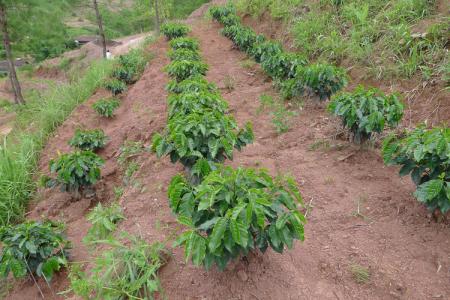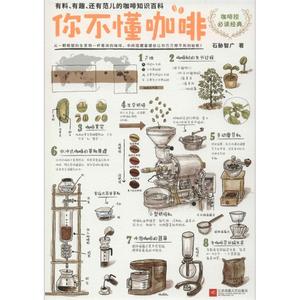Sowing and harvesting of Coffee
Coffee harvesting (1) hand picking: with the exception of Brazil and Ethiopia, most Arabica coffee producing countries use hand picking. Hand picking involves not only picking ripe bright red coffee fruits, but also sometimes along with immature cyan coffee fruits and branches, so these immature beans are often mixed with refined coffee beans, especially when refined by natural methods. If these beans are mixed with baking, they will produce a disgusting stench.
(2) shaking down method: this method is to hit the ripe fruit or shake the coffee branch with a random stick, so that the fruit falls and accumulates into a pile. Larger estates will use large harvester, while small and medium-sized farms will harvest with a sea of people mobilized by the whole family. This method of shaking the fruit off the ground is easier to mix with impurities and defective beans than the hand-picking method, and beans from some places can be stained with a strange smell or fermented because the ground is wet. Producers of Robusta coffee beans such as Brazil and Ethiopia are mostly harvested in this way.
Coffee drying method (1) drying refining method: also known as natural drying method, is to spread the fruit in the open-air sun field, drying in the sun. To avoid uneven drying or fermentation, it must be stirred at the right time. The bright red fruit like a log cherry will turn black after a week in the sun, and the skin and flesh will become hard and easy to take off. At night, it is necessary to cover with a tarp to block the night dew. If the sun drying is smooth, the water content can reach 11% / 12%. This method has the advantages of simple process, low equipment investment and relatively low cost, so it has been adopted by almost all producing countries in the past.
(2) washing refining: the washing refining of coffee began in the mid-18th century. In the refining process, the pulp of the coffee fruit is first removed, then the residual mucous membrane on the inner pericarp is removed by a fermentation tank, and the beans are washed and dried. This method can remove impurities and defective beans through each step, so the appearance of raw beans is uniform and is generally considered to have high quality, but the finer the engineering division of labor, the more procedures for operation and hygiene management, and the higher the risk. The cost of washing equipment is high, and the process and steps of refining are also quite laborious, so the production cost is naturally very high.
(3) semi-washing refining method: coffee semi-washing method is a compromise between drying method and water washing method. The practice is to wash the harvested coffee fruit, remove the skin and pulp mechanically, dry it with sunlight, and then dry it with a machine. It is different from the water washing method in that the coffee fruit is not put into the fermentation tank in the process, and the quality is more stable than the dry refining method. The Silado region of Brazil uses semi-washing to treat coffee.

Important Notice :
前街咖啡 FrontStreet Coffee has moved to new addredd:
FrontStreet Coffee Address: 315,Donghua East Road,GuangZhou
Tel:020 38364473
- Prev

The difference between pure coffee and fancy coffee, the feelings of different coffee
Yemeni mocha coffee (Yemen Mokha), the oldest coffee in the world, is exotic, slightly alcoholic, spicy, sour and sweet. Full-bodied gentleman Sumatran Sumatran Mandheling, with syrup and chocolate, slightly sour. Tropical Santos (Brazilian Santos) from South America, a neutral bean with excellent flavor
- Next

Coffee has both advantages and disadvantages-10 little-known facts about coffee
Fact 1: coffee has a slimming and anti-aging effect. Coffee has certain benefits to the human body, doctors say, coffee has both advantages and disadvantages, so moderate consumption of coffee is the key to benefit from it. Studies conducted by American biologists have shown that drinking two to three cups of coffee a day is more than enough to protect the heart. If you are overweight, they can also increase your metabolism and even reduce your diet.
Related
- Beginners will see the "Coffee pull flower" guide!
- What is the difference between ice blog purified milk and ordinary milk coffee?
- Why is the Philippines the largest producer of crops in Liberia?
- For coffee extraction, should the fine powder be retained?
- How does extracted espresso fill pressed powder? How much strength does it take to press the powder?
- How to make jasmine cold extract coffee? Is the jasmine + latte good?
- Will this little toy really make the coffee taste better? How does Lily Drip affect coffee extraction?
- Will the action of slapping the filter cup also affect coffee extraction?
- What's the difference between powder-to-water ratio and powder-to-liquid ratio?
- What is the Ethiopian local species? What does it have to do with Heirloom native species?

